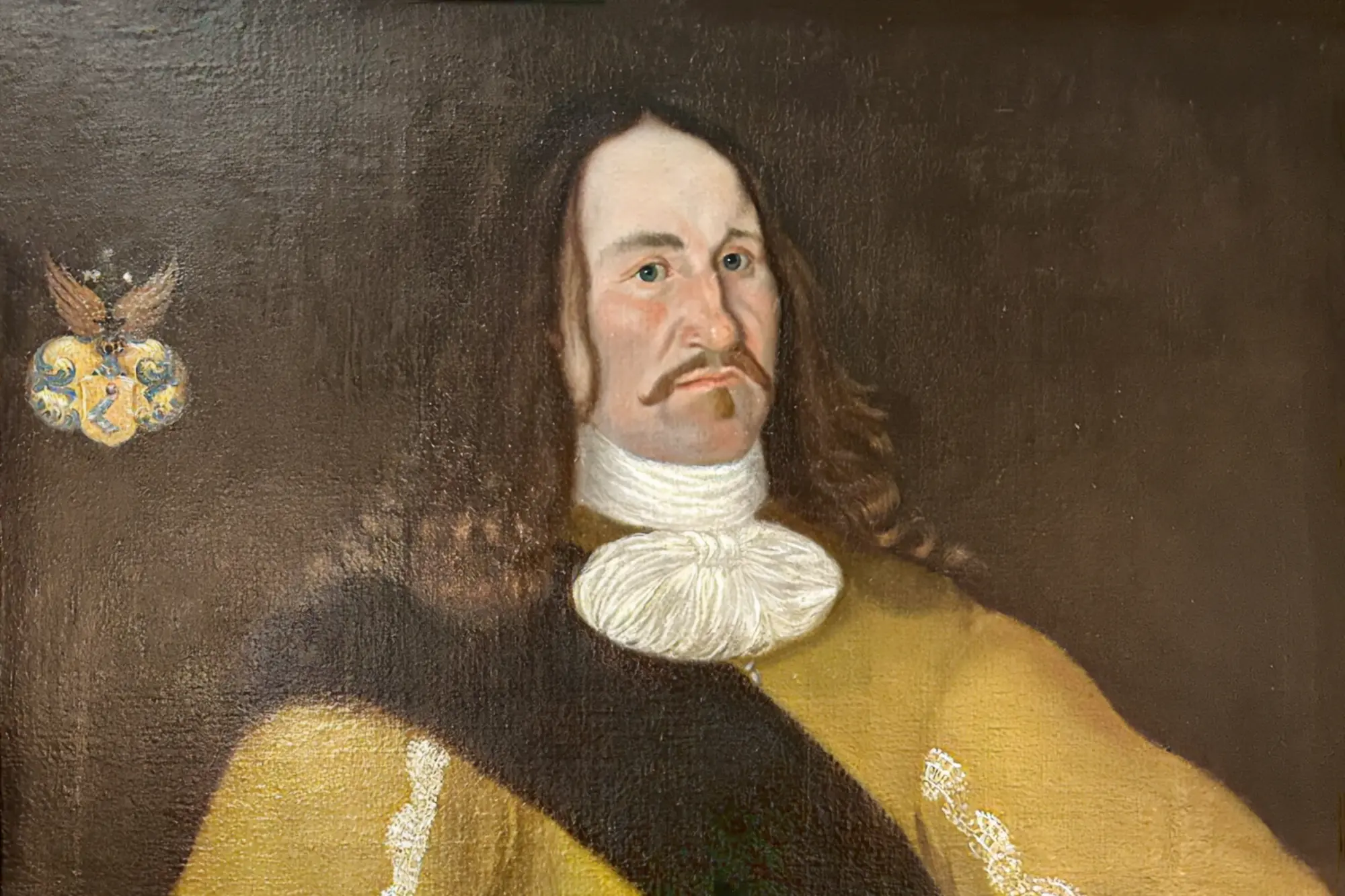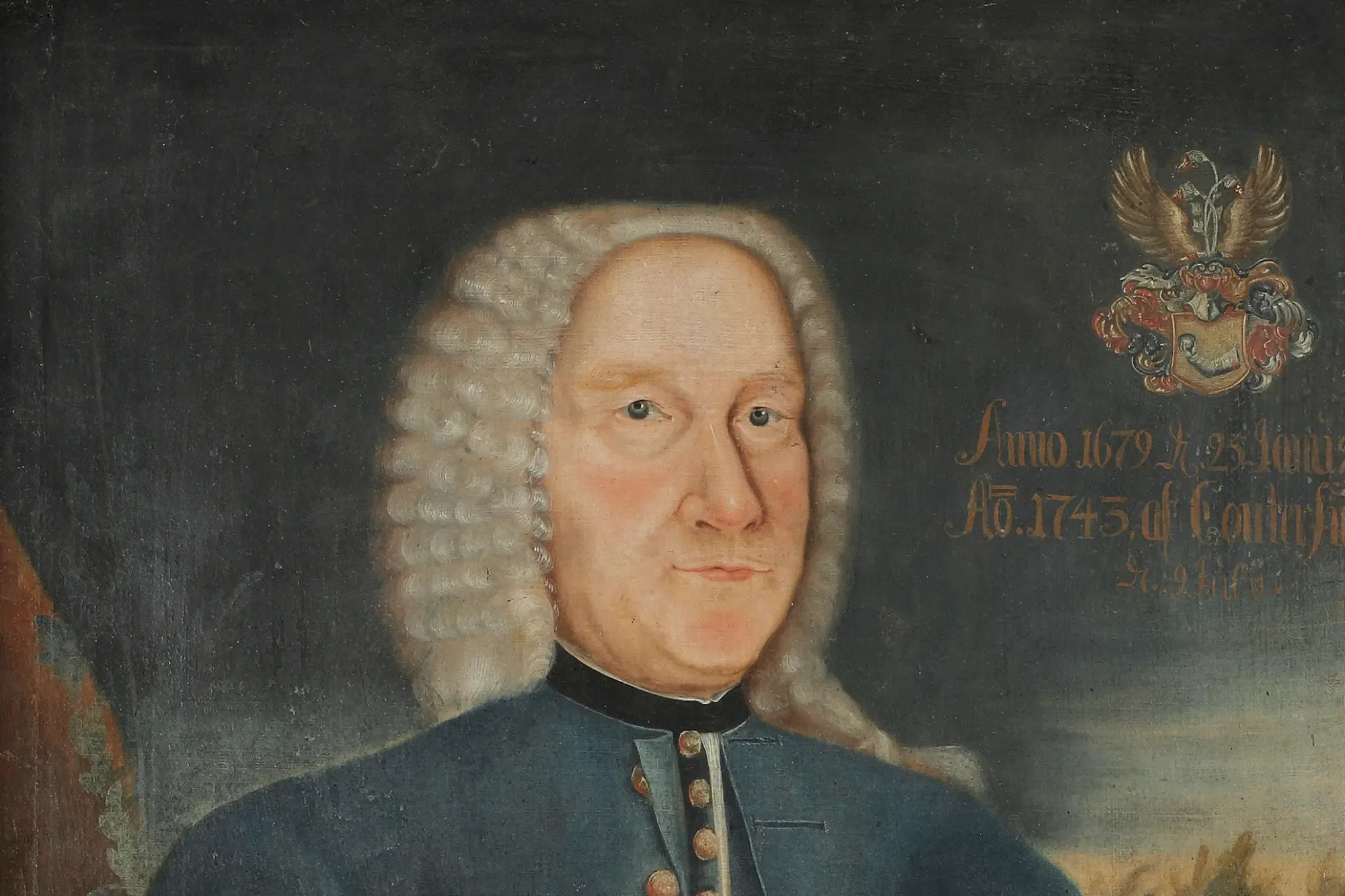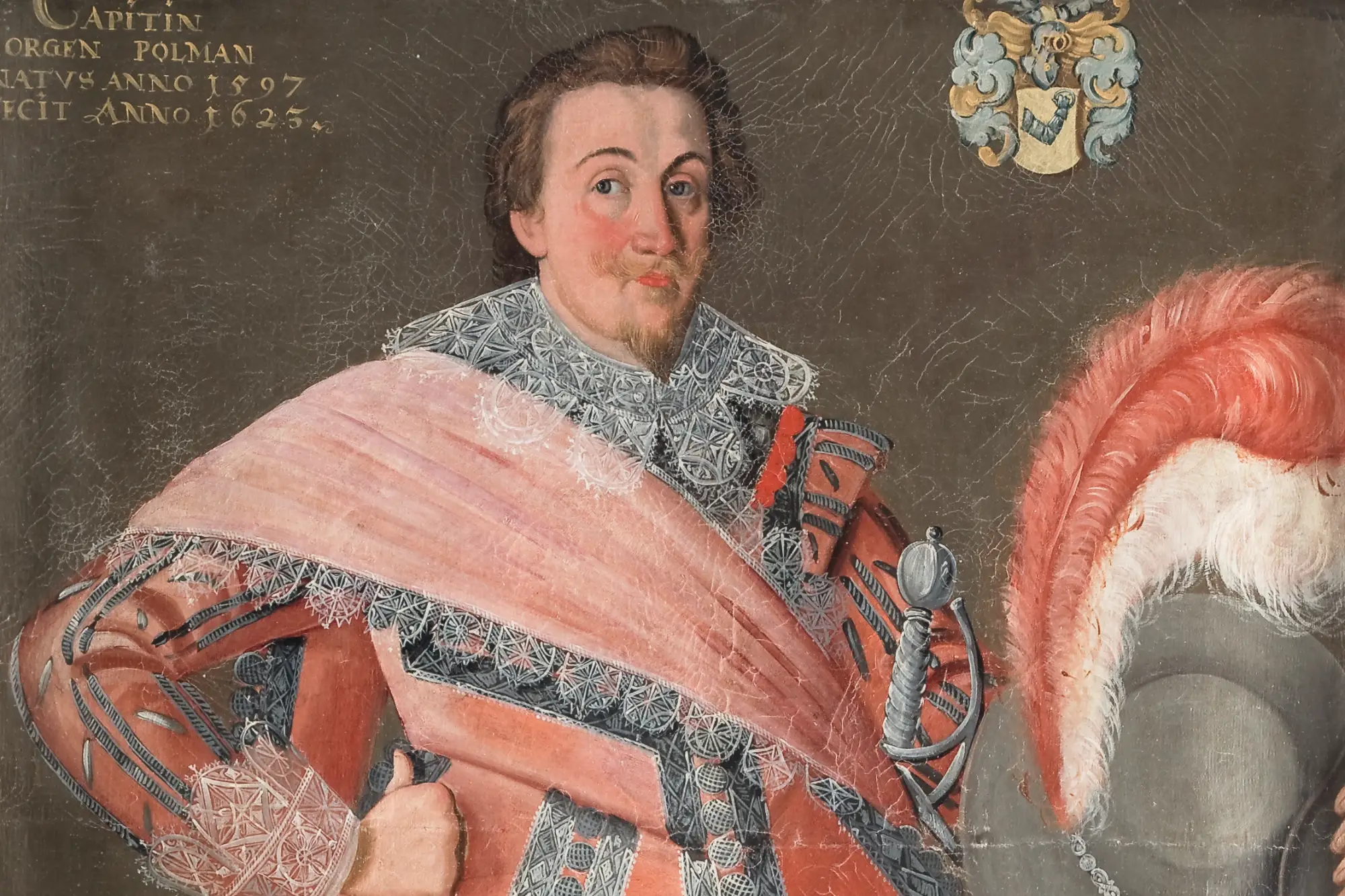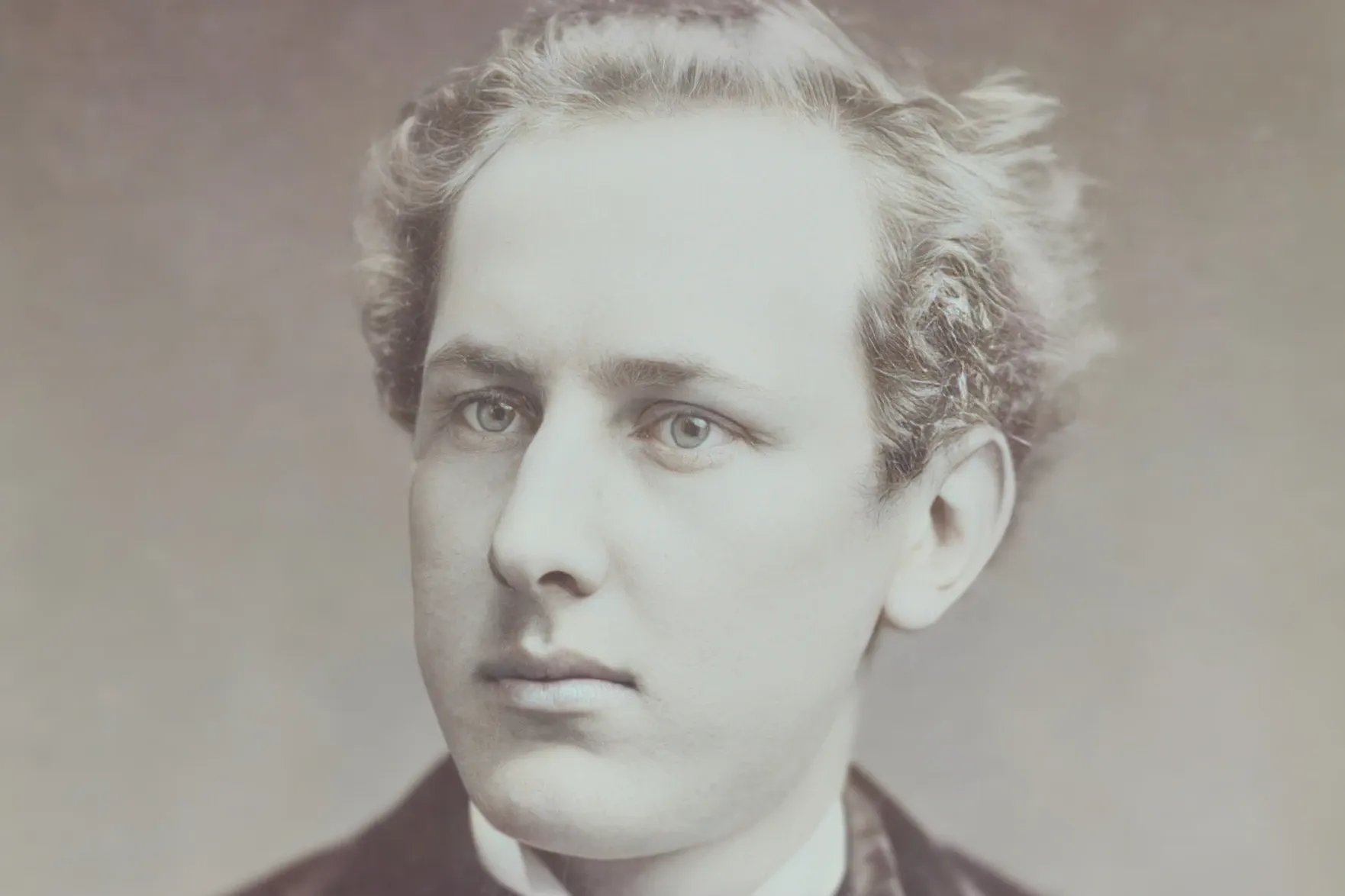The Prudent Jägermeister
Reinhold Wilhelm von Pohlmann[[1]], sometimes known only by the name Wilhelm, descended from nobility in Westphalia.[[2]] He was born on 9 April 1727 at Ereda, Võrnu in Estonia to Reinhold Wilhelm I von Pohlmann and Charlotte von Brackel.[[3]] In 1751, at the age of 27, he married Dorothea Johanna von Wrangell, also a noblewoman, with whom he had six known children – Reinhold Wilhelm, Peter, Gregor, Otto Heinrich, Margarethe and Catherine.[[4]]
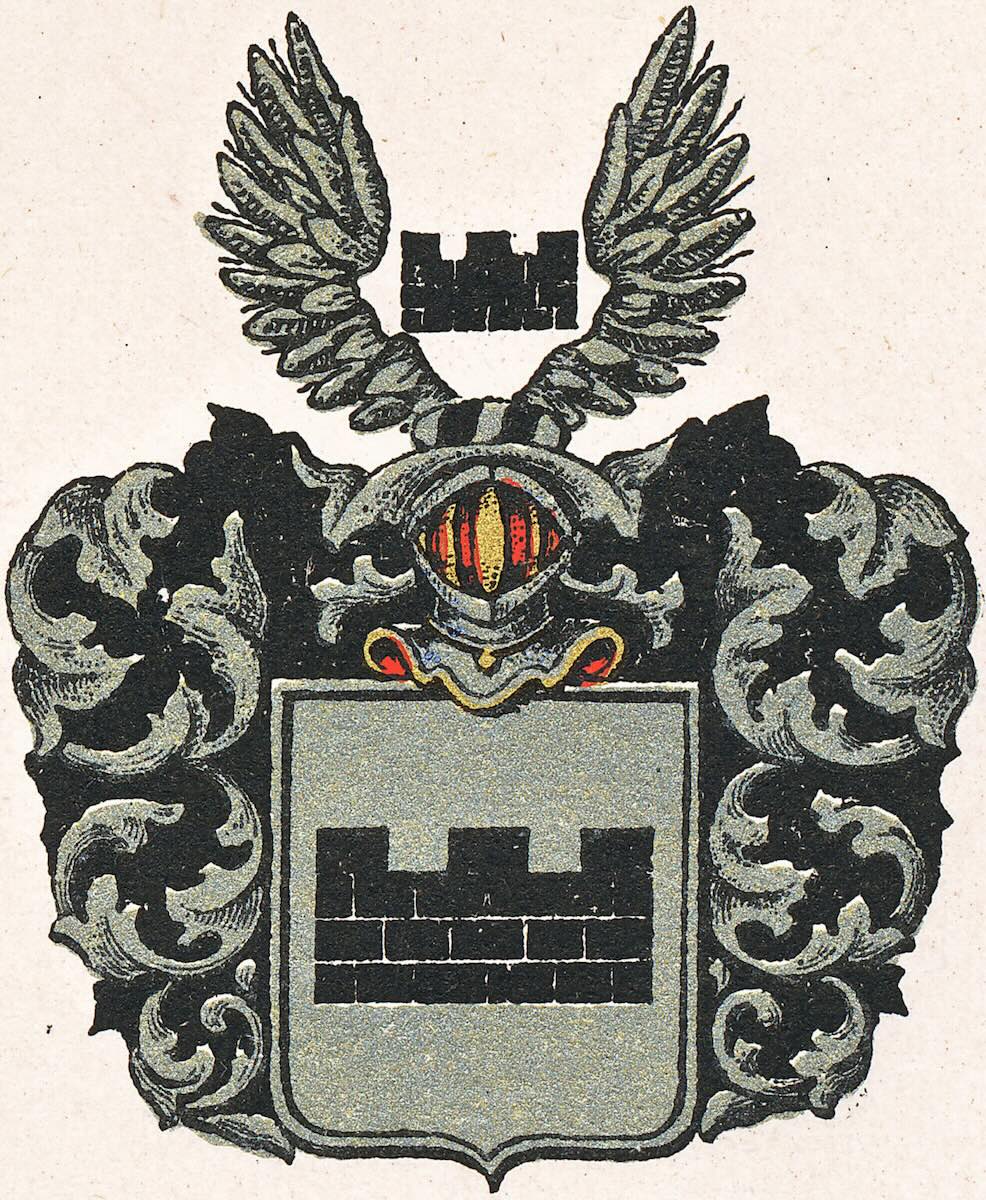
Career
Estonia in the 18th century was ruled by imperial Russia, and Wilhelm was in the service of the Empire.[[5]] He was a lieutenant in 1752, then a district captain or Kreishauptman (1754), colonel or Oberst (1759), gentleman of the bedchamber (1761), general major and chamberlain (1765), lieutenant general, and finally Jägermeister (1768). He retired from this position eleven years later, aged 52.[[6]]
Wilhelm was also involved in various other endeavours. He was held in high regard by Russian empress Catherine the Great, and was a founder and one of 15 members of the imperial Free Economic Society established under the empress in 1765. The goal of the society was to promote economy as well as modernised and scientific agricultural practices, but its members gathered in St. Petersburg to debate various pertinent issues. Wilhelm went on to become the Society’s president in 1770. He was also the director of the German colony in Ingria in St. Petersburg, recommended by Jacob Johann von Sievers – one of Catherine’s reformers – who held that the commission should include representation from each Baltic province and “the most scrupulous fairness and humanity should preside over it”.[[7]] Although Sievers thought that Reinhold was “a little too stern”, clearly he was the best man for the job.
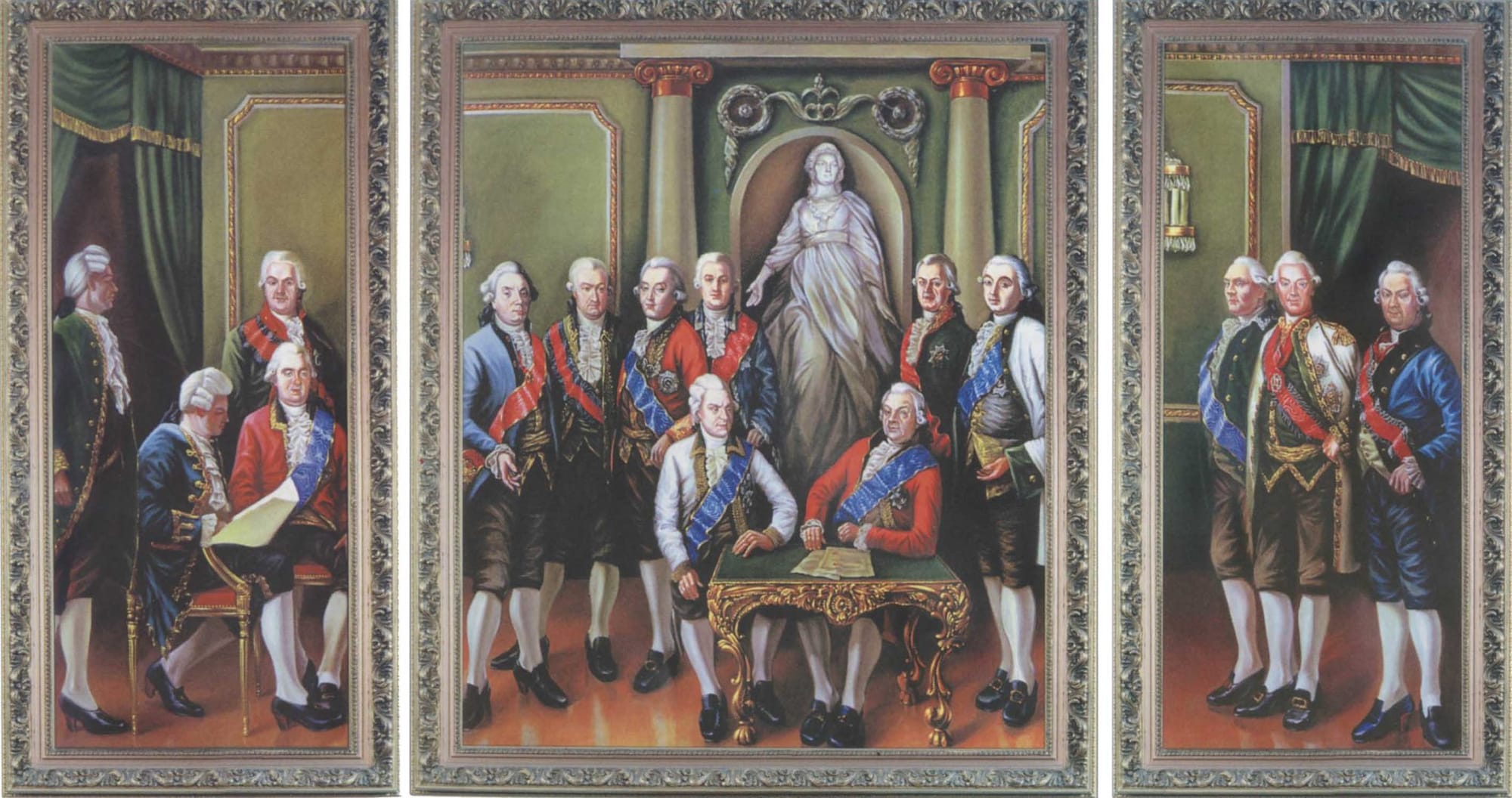
The choice of von Pohlmann and Elagin is of some interest. The former, another Baltic German, was director of Catherine’s own estates at Carskoe Selo (in Ingria) and was therefore privy to Catherine’s thinking about them as well as to the changes and reforms which were undertaken there in the 1760s.[[8]]
The construction of the famous Gatchina Palace in Russia commenced in 1766, supervised by Wilhelm for his friend Grigory Orlov – another founder of the Free Economic Society as well as Catherine’s close advisor and lover[[9]]; she presented Orlov with the estate.[[10]]
“The man she entrusted with this massive project was none other than her and Orlov’s reliable and talented friend, Reinhold Wilhelm von Pohlmann. As supervisor of building works, he would be occupied from 1766 until 1777. His responsibilities included close co-operation with the architect Antonio Rinaldi, appointing workmen, handling the finances, ordering building materials, approving workmanship, and controlling the schedule.”[[11]]
That same year, Wilhelm, who was also in charge of founding German colonies,
“entered into a contract with 22 families from Northern Germany for their settlement at the 12th verst[[12]] of the Great Tsarskoye Selo Road, near the so-called Middle Slingshots. The acquisition of land and the arrangement of the colony, which at first bore the name Colony 22x, was carried out by engineer I. F. Lilienthal.”[[13]]
In 1767, Wilhelm was elected a deputy from among the nobles of the Garsky kreis (district) to the commission for the composition of Catherine’s new legal code based on humanitarian and liberal politics.[[14]] In May 1768, he was introduced by Marshal Bibikov of the commission (and was elected) as a member of a special commission “on mining, saving and planting forests and on trade in general”. In 1771, Wilhelm was the Chief Administrator of Tsarskoye Selo, the Empress’ summer palace.
Nobility and recognition
In 1754, Wilhelm successfully presented evidence of the family’s noble origin to the Matrikul Commission of Estonia. Along with his brothers Otto, a cornet, and Gustav, a lieutenant colonel in Russian service, Wilhelm was included in the Estonian nobility.
Wilhelm was awarded the Order of St. Anna, first class, an order of chivalry typically bestowed by the sovereign. It was not a common honour, commending individuals for achievements in civil or military service.
On 9 June 1762, during the short reign of Peter III (who would be overthrown exactly a month later in a coup d’état by his wife Catherine), Wilhelm was awarded the Order of St. Anna, first class, an order of chivalry typically bestowed by the sovereign. It was not a common honour, commending individuals for achievements in civil or military service. Recipients of the first class received hereditary nobility. Wilhelm had been close to Peter; at least one source indicates that Peter had entrusted Wilhelm to assist his wife in the management of the Grand Duchy of Holstein.[[15]] He possibly aided Catherine’s coup, after which he was promoted and remained in her service henceforth.
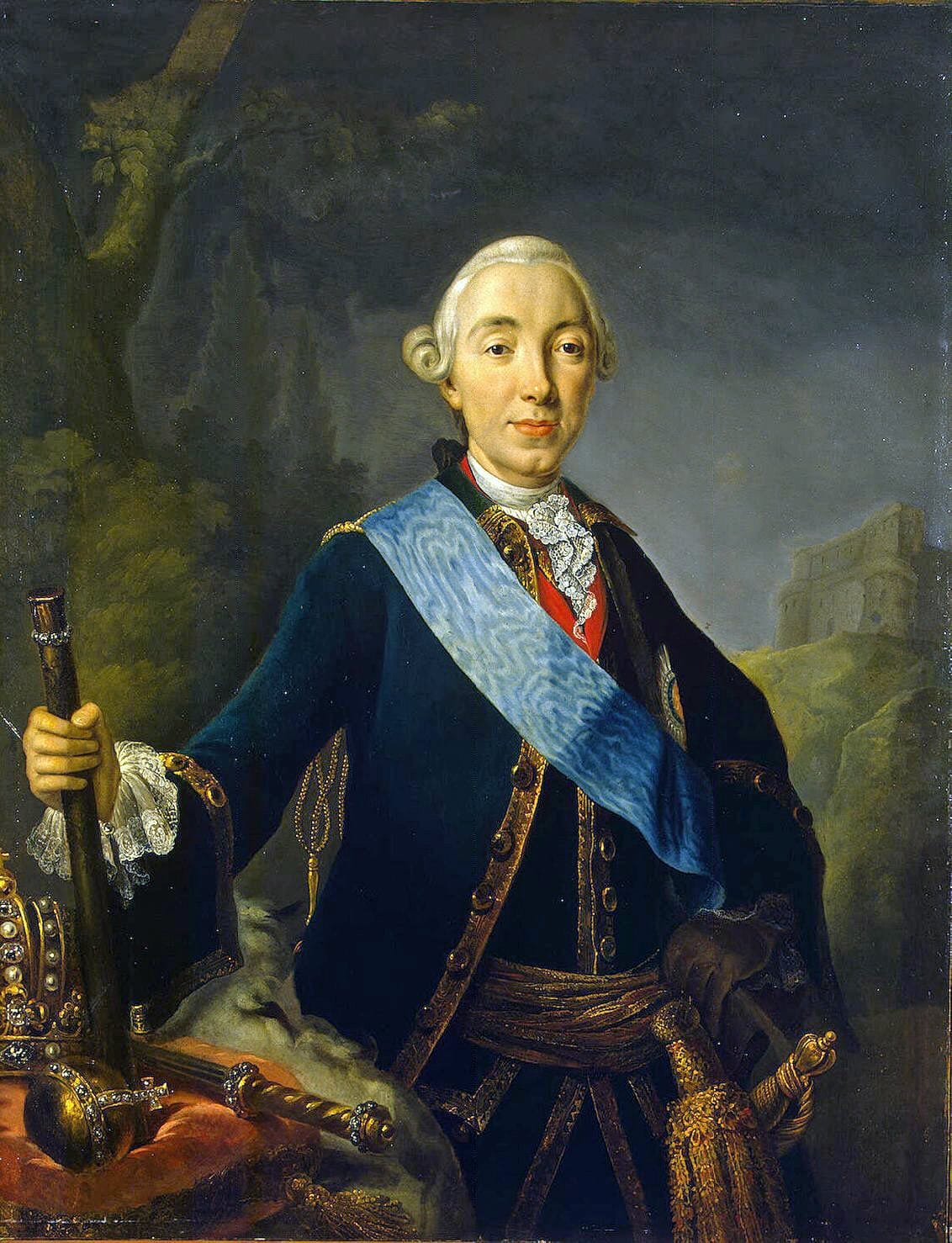
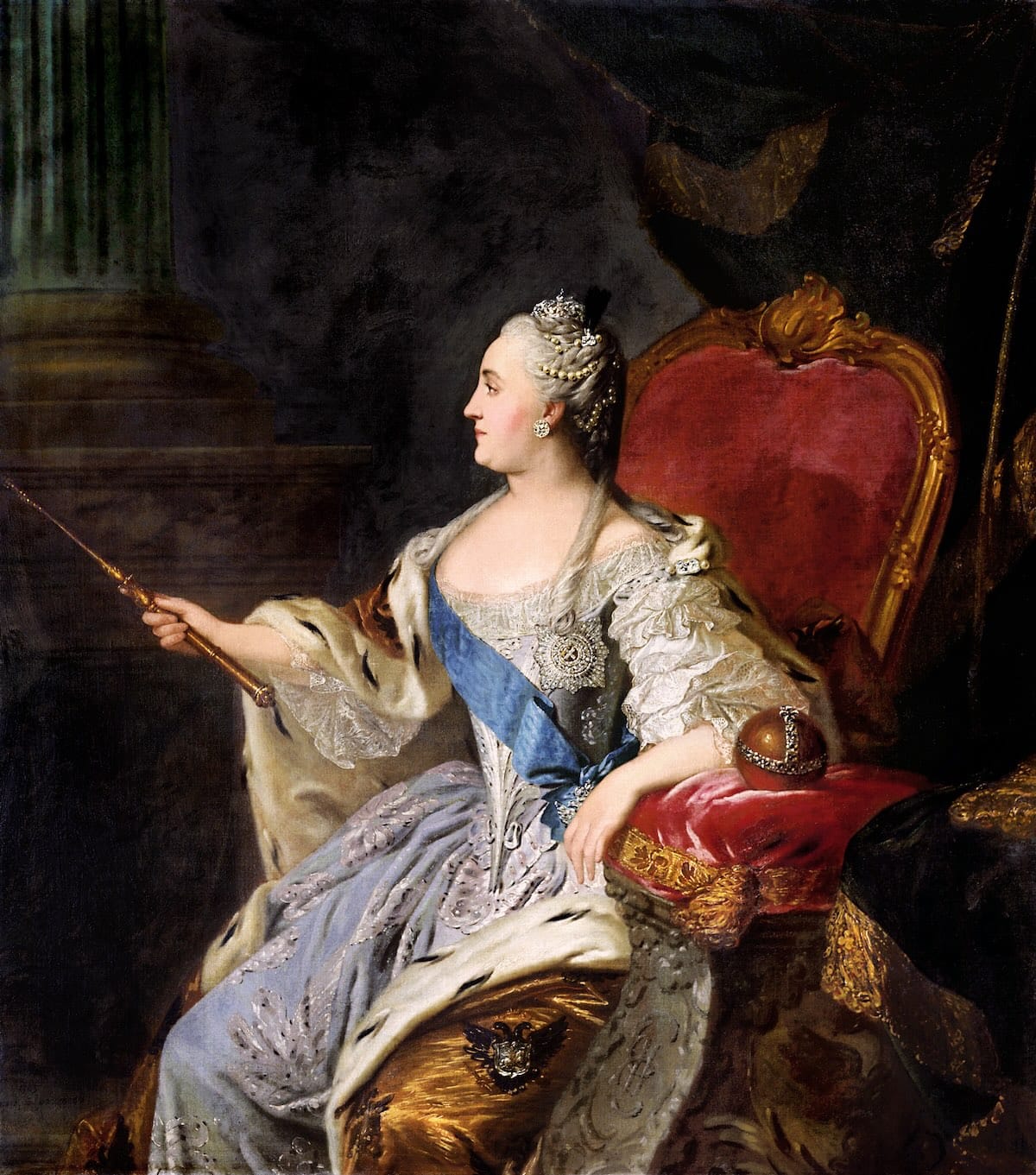
Emperor Peter III of Russia, Lucas Conrad Pfandzelt, Public domain, via Wikimedia Commons / Empress Catherine the Great, Fyodor Rokotov, Public domain, via Wikimedia Commons
Additionally, in Moscow in 1767, Wilhelm was received into Estonian Knighthood – a fiefdom comprising Baltic German nobles that remained powerful even during centuries of Swedish and Russian rule.[[16]] In 1769, he was awarded the Order of St. George (fourth class) by Catherine. On 16 December 1783, he was one of the representatives of the knighthood to express their gratitude to the Empress for introducing governorship.[[17]] He was also a Freemason.[[18]]
Retirement
After Wilhelm’s retirement as Jägermeister in 1779, he focused on his family[[19]] and managing his various manors.
He returned to his native province, where he was highly regarded, and whose interests he was often asked to defend in Petersburg.[[20]]
He had inherited Oethel in the Estonian parish of St. Petri from his father, and acquired the Wrangell family’s manor Sicklecht from his mother-in-law on 18 March 1752 in exchange for an inheritance of 6,700 Reichsthalers. The latter, however, he had pledged to Captain Georg Wilhelm von Lilienfeld on 18 December 1758 for a period of 90 years in exchange for 65,000 roubles and 21,000 roubles banco assign.[[21]] In the 1760s, Wilhelm bought the striking House 14 in St. Petersburg, with six stories, a turret, and high bay windows.[[22]]
On 25 June 1772, Wilhelm had also bought Kodila for 40,000 roubles, followed by a house on Langstrasse in Reval on 1 March 1777 for 7,000 silver roubles from District Councilor Claus Gustav.[[23]] In addition to these, in 1786 he was asked to take charge of Lohde Castle, now better known as Koluvere, which was the property of Catherine the Great. Lohde was formerly presented to and owned by Orlov – a signing ceremony was held in St. Petersburg in 1771 with Wilhelm as a witness.
Letters by the empress to Baron Melchior von Grimm indicate that she thought of Wilhelm as a careful and prudent man.[[24]] Perhaps this was why she entrusted the now-retired Wilhelm with an unusual assignment. In December 1786, after the death of his wife, he was summoned to St. Petersburg by a personal imperial decree. Catherine asked him to become the guardian of Princess Auguste of Brunswick, who resided in St. Petersburg and was unhappily married to the abusive Prince Frederick of Württemberg.
To facilitate this arrangement, Lohde was transferred to Wilhelm, who would manage the income and expenses of the estate. While Catherine handled the larger ramifications of Auguste’s separation from her husband, the princess would reside at Lohde, and Wilhelm was asked to accompany and remain with her, alongside her maid Miss Sander, a Mrs. Wilde, and Wilhelm’s two daughters. Between 1787-88, Catherine wrote many letters to him enquiring after the princess, whom she called Zelmira – letters that convey a sense of openness and comfort “without the slightest [...] ulterior motive”[[25]] resulting from a long and trusting acquaintance. Wilhelm is said to have cared for his little household protectively like a father.
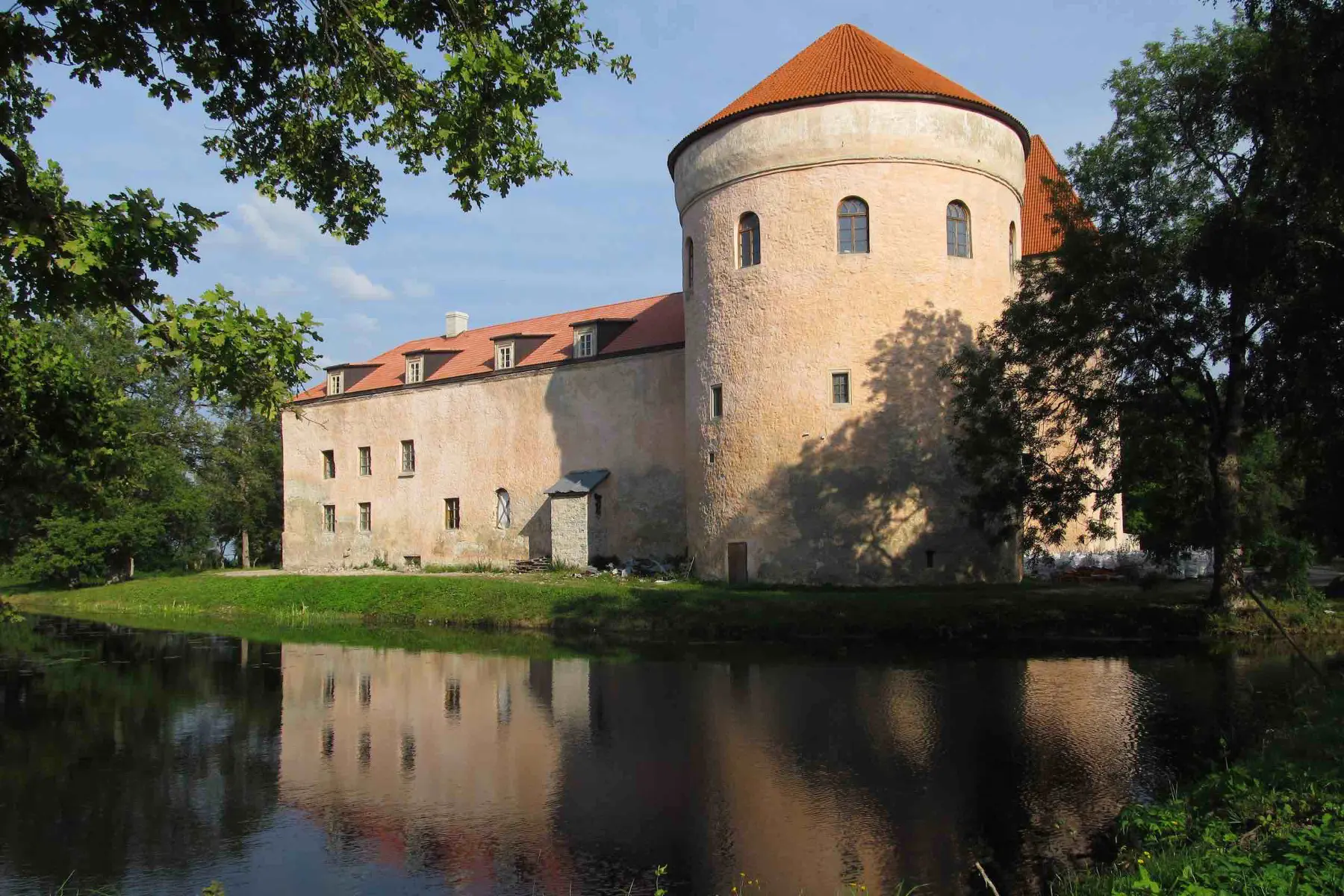
However, on 16 September 1788 (29 September in the Gregorian calendar), Auguste died suddenly at the age of 24 of incessant vaginal bleeding, the exact cause of which is unknown. She was buried in a church in nearby Kullamaa. Wilhelm, disturbed by Auguste’s death, wrote to Catherine three days later, followed by a medical report.[[26]] Due to the mystery surrounding the event, rumours about Wilhelm being one of her lovers and covering up her death began to be whispered until they became firmly rooted, and persist to this day despite being disproved in an enquiry conducted in 1819.[[27]]
Wilhelm was still living at Lohde in 1789, completing the tasks entrusted to him and clearing up debts and finances. On 9 March that year, he had a trial against Joachim Friedrich von Wrangell, a Russian second sergeant, regarding the ownership of Wilhelm’s house on Langstrasse No. 44[[28]] in Reval. Wrangell claimed that he had bought the property on 15 August the previous year for 7,500 roubles and wanted it transferred to his name. Perhaps the aftermath of Auguste’s death in 1788 had occupied Wilhelm and caused a delay; in any case, he now gave his consent without further ado.[[29]]
Wilhelm then returned to Kodila, shrouded in his newfound, questionable reputation, where he died on 22 January 1795.
Reinhold Wilhelm von Pohlmann in the Collection
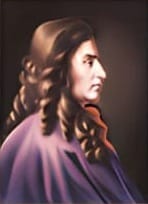
Explore all posts and collections tagged Reinhold Wilhelm von Pohlmann
[[1]]: Also known as Romanovich Vilim in Russian and Renaud Guillaume de Pohlmann in French.
[[2]]: He primarily spoke German, which was also the administrative language of Estonia. He was also fluent in French and Russian.
[[3]]: “Pohlman, Reinhold Wilhelm v. (1727-1795)”, BBLd – Baltisches Biografisches Lexikon digital, Baltische Historische Komission (BHK), https://bbld.de/GND1183553870
[[4]]: Otto Magnus von Stackelberg, Genealogisches Handbuch der baltischen Ritterschaft [Genealogical Handbook of the Baltic Knighthood] (Görlitz: Verlag EU Starke, 1930), 250
[[5]]: While the Pohlmann family had owned quite a lot of property in Estonia, much of this was lost to Russia in 1710 – a fate shared by noble families. Subsequent generations found themselves other employment, including in the service of the Empire.
[[6]]: “Erik-Amburger-Datenbank: Ausländer im vorrevolutionären Russland”, Leibniz-Institut für Ost- und Südost-Europaforschung, https://amburger.ios-regensburg.de/index.php?id=74772&mode=1
[[7]]:Roger P. Bartlett, “J. J. Sievers and the Russian Peasantry Under Catherine II”, Jahrbücher für Geschichte Osteuropas, Neue Folge, Bd. 32, H. 1 (1984), 16-33; Riëtha Kühle, Princess Auguste: On a Tightrope Between Love and Abuse (Amazon Kindle Direct Publishing, 2021), chapter 11
[[8]]: Bartlett, “J. J. Sievers”
[[9]]: Orlov was one of the leaders of the conspiracy to overthrow Peter III, and was made a Count following Catherine’s ascent to the throne.
[[10]]: “аничтаГ дорог »йиĸцемеН«” (German City of Gatchina)”, 1 December 2016, https://gtn-pravda.ru/2016/12/01/nemetskiy-gorod-gatchina.html
[[11]]: Kühle, chapter 11
[[12]]: Equivalent to approximately 1.1 kilometres.
[[13]]: Kobak Alexander Valerievich and Antonov Viktor Vasilievich, “Lutheran Church of St. JOHNNA on Srednyaya Rogatka”, Saint Petersburg Encyclopaedia, http://www.encspb.ru/object/2804678051?lc=ru, accessed: 18 October 2023
[[14]]: “Instruction of Catherine the Great: Russian Political Doctrine”, Encyclopedia Britannica, https://www.britannica.com/event/Instruction-of-Catherine-the-Great, accessed: 11 May 2023
[[15]]: Jean Finot, ed., “La Revue Mondiale” in Revue Des Revues et Revue d’Europe et d’Amérique 77, 1908, https://catalog.hathitrust.org/Record/000675277
[[16]]: These privileges came to an end with Estonian independence in 1920.
[[17]]: von Maltitz, Geschichte der familie von Wrangel, 550-551
[[18]]: Kühle, chapter 11
[[19]]: His four eldest children were in their twenties, while the two younger sons were twelve and nine.
[[20]]: Finot, ed. Revue
[[21]]: von Maltitz, Geschichte der familie von Wrangel, 550-551
[[22]]: Larissa Broitman and Elena Krasnova, Малая Морская улица [Malaya Morskaya Street] (Litres, 2022)
[[23]]: “Kodila Manor”, Estonian Manors, http://www.mois.ee/english/harju/kodila.shtml; Kühle, chapter 11; Emil von Maltitz, Geschichte der familie von Wrangel [History of the Wrangel Family] (University of Michigan, 1887, digitised 24 September 2019), 550-553 – “The guardians of the children of the assessor Reinhold Johann von Wrangel, the district rath and president of the consistory Georg Ludwig von Wrangel (XIV 18) and the major Ernst Ludwig von Hastfer sold with the consent of the widow of the assessor von Wrangel, née Margarethe Helene von Hastfer, and with the involvement Cuirassier Major Dettlof Friedrich von Baranoff, as advisor to the latter, gave the Koddil estate to the hunter master and chamberlain Reinhold Wilhelm von Pohlmann (XIIA 39).”
[[24]]: Catherine II to Friedrich Melchior Grimm, 13 September 1787, in Iakov Grot, ed., Sbornik imperatorskago russkago istoricheskago obshchestva, 148 vols (St. Petersburg: Tipografiia imperatorskoi akademii nauk, 1867-1916), v. 23, 1878, p. 416, translated from French, https://babel.hathitrust.org/cgi/pt?id=inu.30000108539531&view=1up&seq=432&skin=2021, accessed: 1 August 2023
[[25]]: Finot, ed. Revue
[[26]]: Irina Voropaeva, “Princess Zelmira’s Ball”, Proza.ru, https://proza.ru/2015/04/15/1174
[[27]]: Kühle, chapter 14
[[28]]: Today 44, Pikk Street
[[29]]: von Maltitz, Geschichte der familie von Wrangel, 514


